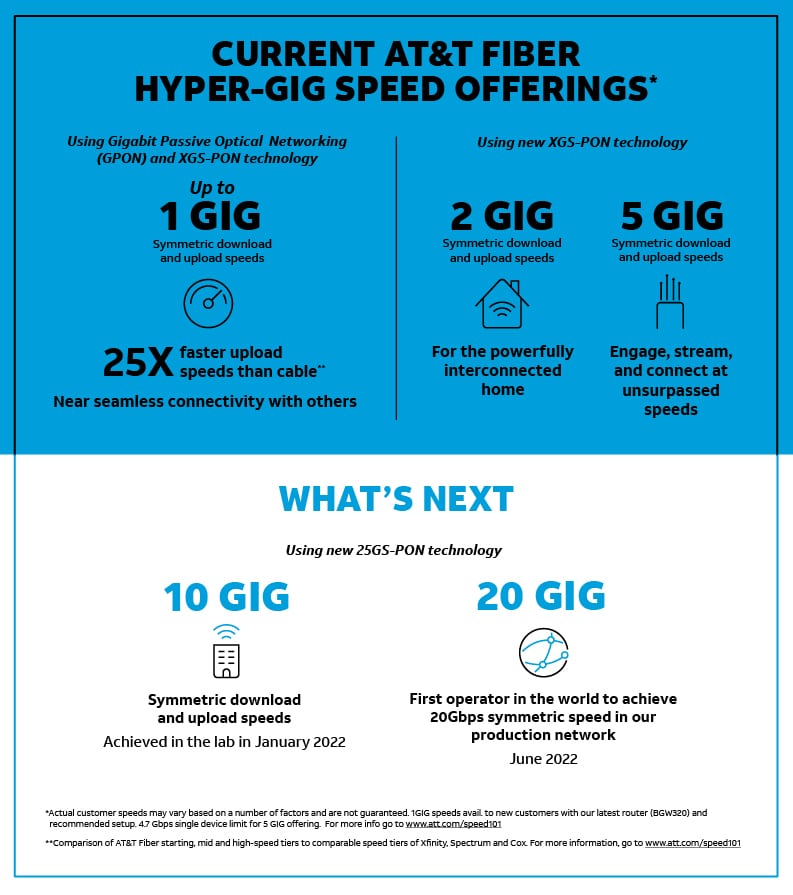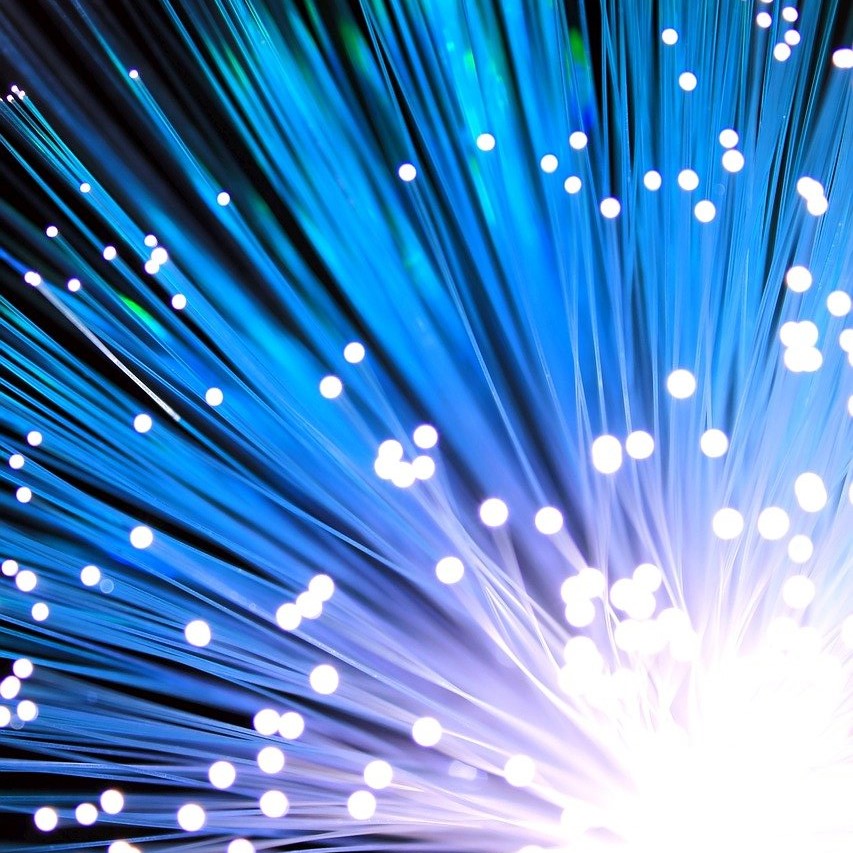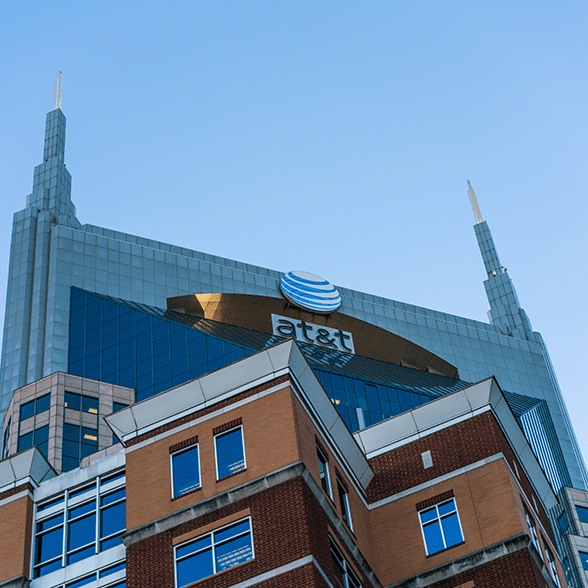AT&T said today that it was successful in delivering symmetrical broadband speeds of 20 Gbps over its production network using 25GS-PON technology.
Until now, the 25G-PON technology that has been available has supported 25 Gbps downstream but only 10 Gbps upstream, explained Eddy Barker, AT&T assistant vice president of Mobility & Access Architecture, in an interview with Telecompetitor. Newly available optics made symmetrical communications possible, Barker said.
The 25GS-PON moniker specifically denotes a standard created by the 25GS-PON MSA group, an industry group comprised of about 50 service providers and suppliers. According to fiber broadband manufacturer Nokia, the “S” in 25GS-PON refers to the symmetrical implementation of the offering, which suggests that anyone offering the asymmetrical 25/10 Gbps implementation should use the term 25G-PON instead. But it’s a distinction that may become blurred, as the industry has not emphasized that there are two different implementations of the technology.
Late last year, Frontier said it completed a trial of 25G-PON technology but did not say that it supported symmetrical 25 Gbps speeds. At least one company – Hotwire — has deployed 25G-PON technology but has only announced 10 Gbps symmetrical speeds for it.
25GS-PON Maturity
AT&T expects to see “mature” 25GS-PON equipment within the next six to 12 months, Barker wrote in a blog post. In our interview, he provided some additional detail about that.
He noted, for example, that the customer premises equipment (CPE) used in AT&T’s latest test was based on field-programmable gate arrays (FPGAs) and wasn’t cost optimized.
He anticipates that vendors will be closing gaps in the ecosystem and making more marketable CPE. He also anticipates more supplier diversity and competition by late 2023 and into 2024.
Upgrade Path
Barker’s blog post touts the ability of 25GS-PON to run over the same fiber optic cables that the company has “spent the last decade-plus installing nationwide.”
In the trial, the company was able to “take advantage of wavelength coexistence with our FiberWise technology – combining 25GS-PON with XGS-PON and other point-to-point services over the same fiber to offer an efficient evolutionary path,” the blog post explains.

Barker told us he expects 25GS-PON equipment to be a bit more expensive than XGS-PON equipment, but doesn’t think it will be “phenomenally” more expensive. He also emphasized that the costliest portion of fiber broadband service is the fiber infrastructure and “that doesn’t change one bit” for 25GS-PON.
He pointed to the hypothetical example of a business taking slower fiber broadband service that decides to upgrade to 25GS-PON.
“We can overlay it on the same fiber that’s already going into the business,” thereby expediting and simplifying the upgrade process, Barker noted.
The 25GS-PON approach “will give us the capability to not only offer higher speed – we can do it as we need to in bits and pieces,” he said.
It’s worth noting that Verizon and any other companies choosing to deploy NG-PON2 will have a completely different upgrade path, not yet charted, to 25Gbps service.



